With the public news of proceedings being issued against Bankside Yards in Southwark, and at least three disputes making their way to courts, the rights of light field is seeing a trend that is increasingly involving litigation.
Many of these cases are motivated by the pursuit of the highest possible compensation, which can often be leveraged by the potential threat of injunction. This aggressive approach is only encouraged by the increasing legal and technical uncertainty that surrounds the subject.
Using the example of the recent case of Sirosa Properties Establishment (Sirosa) v The Prudential Assurance Company Limited (PACL), 2022, we reflect on the unresolved matters that are contributing to the rise in litigation, with major question marks around assessing impact and damages.
In November 2022, the Sirosa case made its way to the High Court. While the claim was settled on the first day, it brought major considerations to the fore, and it is these same arguments in similar cases that are giving an insight into the potential direction of the industry.
There are significant challenges ahead. In a post Covid world, wellbeing in habitable spaces is a priority, and daylight plays a role in this. More recent methods of analysis offer a greater understanding of the actual experience of daylight impact. Coupled with this, there is a potential conflict in the way that artificial lighting can mitigate an impact. All of these factors can influence the determination of when a nuisance has actually occurred.
Equally, there is a shift away from damages being based on the neighbour’s loss, in favour of the developer’s gain. The assessment of when a nuisance has occurred will determine the extent of gain that the developer has made.
The ease of issuing proceedings coupled with these uncertainties place the industry in even deeper uncertainty. Even if the case went to court and the developer was successful in the first instance, the likelihood of an appeal is high. The timetable to get to a court case and potentially an appeal decision is normally lengthy, and litigants are very aware of this predicament.
This could create a situation where each case is bespoke on both the legal and technical interpretations applied. This is only going to increase costs and uncertainty further, particularly if litigation is involved.
The law does not yet know how to deal with these challenges. Even if it attempts to, the result may only be case specific.

Waldram Analysis
Sirosa’s argument centred around the use of the Waldram Methodology and the so called 50:50 rule of thumb. Dating back to the early 1900s when Percy Waldram established a 1 foot-candle as “the average minimum requirement of adults for clerical work and for ordinary purposes”, the conclusion that to receive 1 foot-candle of illuminance, a point must experience a view to 0.2% of the sky dome.
The 50/50 rule of thumb emerged from the Waldram method. In simple terms, if half the room experiences a view to 0.2% of the sky dome, the room is believed to be ‘well-lit’. Surveyors have built on this to derive the Book Value Method (EFZ) to calculate compensation budgets. Despite its widespread use, the Waldram method’s application in modern urban environments has many limitations.
- It ignores internally and externally reflected light.
- It fails to take into account the loss of light due to windows and window frames.
- It is based on an unrealistic model of the sky dome.
- It wrongly assumes that one lumen per square foot is adequate light.
- It encourages an incorrect, binary interpretation of a material change in light.
In the 2020 case, Beaumont Business Centres v Florala Properties (2020) in which GIA was involved, Peter Knox KC held that while Waldram analysis had “stood the test of time”, in some instances should “provide only a starting point in the inquiry as to whether there has been an actionable interference.”
Irish judges have long taken a more critical view of the Waldram method. In a leading case of McGrath v Munster and Leinster Bank (1959), Dixon J regarded the method as “inherently inadequate to give a sufficiently comprehensive result.”
In pragmatic negotiations, where both sides are seeking an amicable agreement, the Waldram methodology remains useful. Yet there have been countless papers written on its deficiencies by leading experts, with these being increasingly voiced by the legal profession. A method, created more than 100 years ago, while providing simplicity and certainty, surely cannot be considered the sole basis for assessment now that better forms of analyses exist.
Even the Law Commission acknowledged the relevance of these new forms of assessment in 2014. After all, one of the key questions is how to find a more accurate way to determine whether a change in light alters the beneficial use and enjoyment of a space.
Currently it is only when discussions enter the legal arena that these sophisticated analyses are used. This is likely to change.
Complementary technical assessments
The increasing use of new methodologies for complex rights of light disputes will be accelerated by the 2022 BRE Site Layout Guide For Daylight and Sunlight. This document also highlights the importance of daylight in all forms of accommodation, and in fact is already diluted compared to other European standards.
At GIA we use a wide range of complementary technical assessments:
- Vertical Sky Component (VSC)
- Radiance-based Median Daylight Factor (MDF)
- BREEAM Uniformity Ratio
- Climate-Based Daylight Modelling (CBDM)
These methodologies give a far deeper insight as to how a change in light may be perceived by an occupant, and what the resulting experience might be due to neighbouring development. While unrelated to the law of light, when considering experience within a space, a less tangible of development is how a window can provide a sense of connection to the outside world – even if the sky visibility is low. In a building with good artificial light, the window itself is valuable for reasons other than daylight.
Artificial Light
In Midtown Ltd v City of London Real Property Company (2005) it was argued that as the loss of light occurred to an office that relied wholly on electric lighting, there was no actionable infringement. The court ruled that an infringement had occurred, but due to the reliance on electric lighting, awarded damages in lieu of an injunction.
This approach was also supported in the Rights to Light Law Commission where it was stated that: “Whilst the loss of natural light is always the starting point, it may seem counter-intuitive for the court to ignore the presence of artificial light, particularly in the commercial context where offices may use artificial lighting constantly.”
It seems inevitable that artificial lighting will feature in future cases. Waldram methodology makes assumptions regarding adequate lighting that were set long before the invention of modern electric lighting. In a post-Covid world where we are all more focused on health and wellbeing, natural light must be a major consideration. Yet the ever-increasing quality of artificial lighting can often provide a brightness and uniformity that cannot be achieved by natural light alone. Another question and one that raises the importance of context in any technical analyses.
Technical implications
In the future we may see a shift away from a reliance on testing materiality with the Waldram Methodology, in favour of analysis that can describe perceptibility of a change. ie. When does a nuisance actually occur? This shift would realign the law with current technology but also represents a move towards a more contextual wellbeing-led approach. This would solve a current problem where, in using Waldram Analysis, large, noticeable changes in light at the back of a room can be found to be immaterial, yet small imperceptible changes are actionable. The two examples below illustrate this:
- Scenario 01 – 95% – Well-lit in the existing position down to 55%. Well-lit in the proposed position.
This scenario could easily represent a noticeable change but would be considered immaterial by 50:50 rule of thumb.
- Scenario 02 – 45% – Well-lit in the existing position down to 40%. Well-lit in the proposed position.
This change would be flagged as material by the 50:50 rule of thumb but may not even be noticeable to an occupant.
However, this point rests on what the right is for. Is it to the same quantum of light an aperture has always enjoyed for the prescriptive period or is it a right to only adequate light which is where the interpretation of the law stands currently. If it is the latter, then what is adequate and how is that assessed? When is a material interference deemed to have occurred?
As we see a movement towards new methodologies, we should not be surprised if we see an entirely different set of conclusions with regards to what is adequate. How do we align this with daylight literature and recommendations which seek to increase the standards and quality of daylight in all types of accommodation?
Do we stick with Waldram analysis and its simple, unambiguous method for deciding materiality in the knowledge that the assessment is deeply flawed? Or do we use more sophisticated assessments with the understanding that the law has not yet caught up and there is even more uncertainty regarding the measure of what is material?
Remedies
This technical uncertainty opens the door to not knowing when an impact is truly a nuisance. If you have a legal right, what’s the remedy for a recognised loss of light? Does the judge award damages or an injunction? It is this ambiguity that significantly incentivises litigation. There is an increasing awareness that where a neighbour enjoys rights and experiences a ‘material’ loss, they can choose to litigate and maximise their compensation. It is the threat of an injunction hanging over a developer that encourages them to offer ever higher payment.
If we move away from injunction, the issue of compensation must be resolved. The law of nuisance typically looks at the gain to the developer. Rights of Light has historically looked more at the loss to the neighbour, albeit recognising the principle of gain. Currently surveyors remove massing from the scheme until the impacted property remains well-lit by reference to the 50:50 (ie. Waldram-based) rule of thumb. A share of the profit from this removed portion of massing, dictated by the specific facts of the case, is then awarded to the neighbour.
A move towards Radiance-based analysis and CBDM adds greater complexity to this exercise. We would need to determine where a material impact had actually occurred and the area of the developer’s scheme causing this change.
Where do we go next?
This increasing uncertainty in both the legal and technical fields signal change is on the horizon. Sometimes these points will actually get considered in court. Even then, it is likely that the specifics of any case could be challenged in the future.
This could have radical implications for many parts of our sector.
How will the insurance industry underwrite rights of light?
How does this impact the developer doing an appraisal to navigate an increasingly challenging environment that actively encourages and justifies an impacted neighbour litigating to extract more compensation?
How does a Rights of Light surveyor properly advise on an impact and the appropriate remedy?
There is the potential for every case to require a bespoke approach to navigate the technical and legal ambiguity. It is therefore vital for a Rights of Light practice to fully comprehend the many moving parts of this industry.
By understanding all these challenges, GIA can create intelligent strategies to ensure that a developer is fully appraised of the situation. By asking these difficult questions, and set against a backdrop of much uncertainty, we are developing the solutions.



